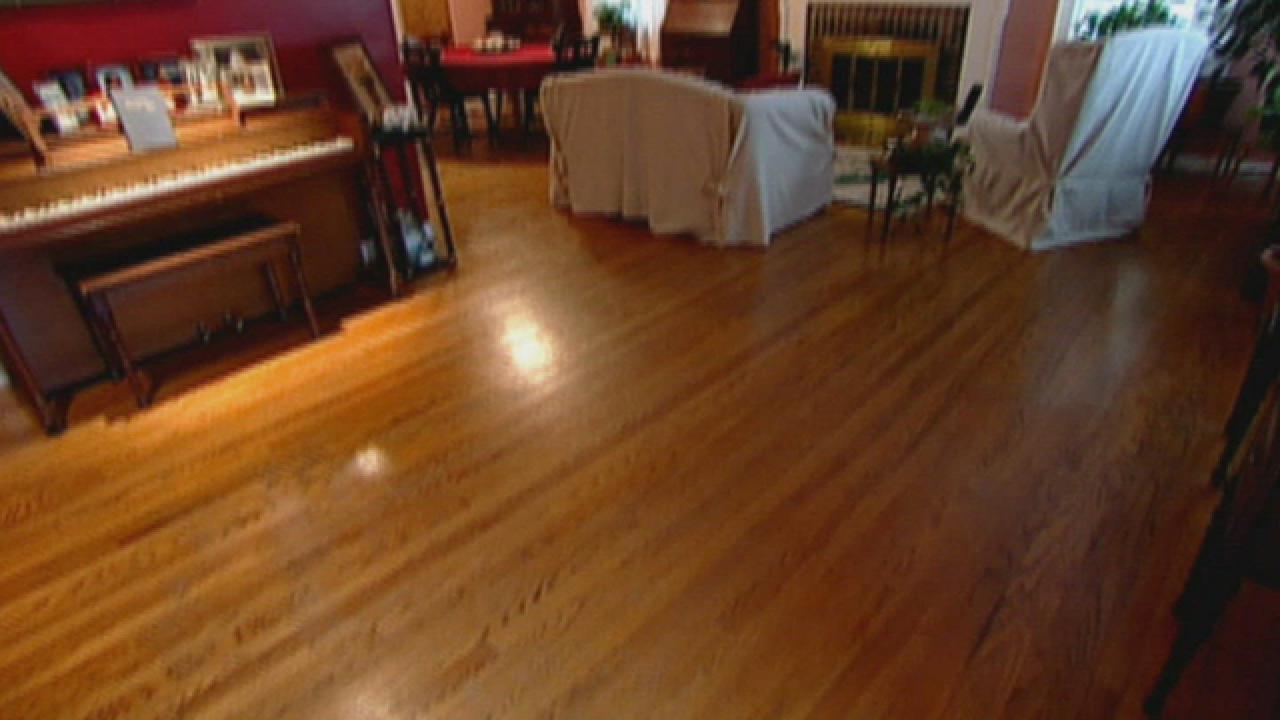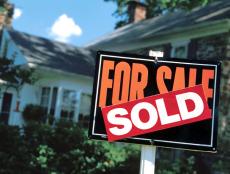How to Make an Offer for a House

Formulating an offer is not a precision endeavor. Unless you are buying a new home, or a home or unit in a development where identical units have sold very recently, there is definitely an element of crystal ball-style prognostication involved in trying to make an offer the seller is likely to accept without paying more than you have to for your home.
Step 1: Comparative Market Analysis (CMA)
A CMA is the most widely used, reliable, and mathematical method of estimating the true value of "your" property, and works just like comparison shopping. A CMA distills your property into its essential characteristics – namely, bedrooms, bathrooms, home and lot square footage – and compares it with nearby homes that have similar characteristics which are currently on the market or have recently sold. Specifically, your Realtor will get into MLS and search for properties:
- With a similar number of beds, baths and square feet (give or take a little);
- Which are currently on the market (status: active), currently in escrow (status: pending), or have closed escrow (status: sold) within about the last 6 months; and
- Which are located within a 1/2 to 1 mile radius around the property you're considering buying.
The CMA report your Realtor prepares will list the status and specs of each of the comparable properties (comps), the list price, the sales price, and the number of days the property was on the market (DOM), and will probably also provide some calculations such as high and low sales price, average sales price, and price per square foot ($/ft2).
Look for:
1. Sold Price, Not List Price – Pay special attention to the difference between the list prices and sold prices. Active and pending properties can provide interesting insights, but these properties' MLS entries will only contain their list price (the sales price of pending properties is not reported on MLS until the property actually closes escrow). Remember, the list price is merely an asking price, while the sold price is the price a buyer actually paid for a property that actually closed escrow. For that reason, the sold comparables have the most informational value and relevance of all the comps in your CMA.
2. Adjusted Average Sales Price – The most basic way to use a CMA to gauge what you should offer on your house is a three-step process. First, you get the outer limits of a range of prices by throwing out any extreme comparables in each direction (e.g., the homes that are overly upgraded or waaaaaay nicer than your place and the total tear-downs) and taking the highest and lowest sales prices. (As an aside, that highest sales price is probably pretty close to the maximum value that your home will appraise for.) To narrow the range, your second step is to average the sales prices of the comparable properties – add them all up, divide the sum by the number of comparables, and the result is the average.
Then, the average sales price needs to be adjusted upwards and/or downwards based on how the comparable properties compare with the property you want to buy on each of the following items:
- Are the units or lots smaller or larger?
- Same number of beds and baths?
- Are they similarly upgraded with similar features?
- Are they similarly located?
- Were the sales recent, or were they quite awhile ago?
In real life, your Realtor will conduct this analysis for you. And they will have the expertise to gauge how much – and in which direction – to adjust the average for square footage location, or the recency of the sale. But I want you to understand the rationale behind it, so you can walk through the numbers yourself and have some basis for that subconscious reality check we all like to do. If the numbers don't make sense to you, see if you can locate the logical problem in the CMA. If you don't find any inconsistencies or mistakes in the CMA, that's your clue that you're probably just freaking out because of the momentous purchase you're considering. This is normal, so sit with your freak out for a moment – take a deep inhale and exhale, then keep on truckin'.
3. Degree of Similarity Between Your House and the Comps – All these averages don't matter much if the properties are not really that similar to yours. This is the biggest drawback to rough-and-dirty web CMA sites like Zillow – they get their essential specs for your property and the comps from the public records, which are often incorrect, and so they can't adjust for a house that has a huge addition, or is in an inferior location (e.g., on top of the railroad tracks), or is simply very different from neighboring homes. Also, if your market took a major upswing or downturn three months ago, the six-month-old sales won't be nearly as strongly predictive of the value of "your" home. Your Realtor will have adjusted the averaged sales prices of less similar comps in order to approximate the value of your home and the purchase price you should offer to pay, and adjustments can be imprecise.
On the other hand, the sales price of even one recent very similar comparable property can be highly predictive of the market value of the home you're considering. A highly similar comparable is one which lines up closely with the home you're looking at on the following criteria:
- The Basics – Beds, baths, square feet of living space and lot size;
- Features & Upgrades – Garages, gourmet kitchens, additions, backyards, etc.;
- Condition – Total fixers aren't comps for homes in undisputed move-in condition;
- Location – If one abuts a greenbelt and the other borders a 24-hour multi-cine-plex parking lot, they aren't that similar.
The outcome of your CMA should be to narrow the infinite world of potential prices to: (1) A definite range of prices, with clear upper and lower limits, which reflects the realm of realistic prices an average buyer would pay for the home and realistic appraisal values for the home; and (2) A tentative target price within that range, provided by your adjusted average sales price.
Step 2: Market Trends
Getting a feel for the fair market value of your potential home-to-be from a comparables approach is the critical first step to determining the purchase price to offer for the place. From there, you'll need to take into consideration the trends affecting the real estate market in your region, city and even neighborhood, in order to narrow the offer price range even further.
Buyer's Market vs. Seller's Market – Whether your area is currently in a buyer's market or a seller's market can have a great impact on the price and other terms you offer. How can you tell whether your home is in a buyer's market or a seller's market? The short answer – you'll know. Real estate now rivals weight loss, Brangelina, and Suri Cruise as an obsession for Americans, and you'll hear everyone around you – from national and local journalists and pundits to the watercooler crowd and your book club buddies telling stories of their real estate experiences. Though this is a very unscientific and anecdotal method of market analysis, hearing multiple people spin similar tales can accurately indicate the direction in which the market is leaning. For example:
- Stories about buyers who had to make 10 or 12 offers before getting one accepted = seller's market;
- Stories about homes for sale which received five or nine or 81 offers (yes – I once represented a buyer who had to compete with 80 other buyers to buy a property, and it was a fixer-upper, no less) = seller's market;
- Stories about buyers getting great deals on homes that had been on the market for a long time = buyer's market;
- Stories about buyers having a ton of fabulous homes in fabulous condition, right in their price range, to choose from = buyer's market;
- Stories about buyers getting sellers to do a lot of work to the property after contract = buyer's market;
- News stories reporting a sharp increase in previously low foreclosure rates may indicate a seller's market that is transitioning into a buyer's market (sellers who were expecting to be able to sell their homes very quickly waited until they were in too deep and then couldn't get the home sold before the bank foreclosed).
However, anecdotal evidence is seen as unreliable for a reason, um, because it is. First, the stories you hear are always filtered through the teller's screen of their own biases and often limited understanding of market dynamics. Second, what may be true in your overall market may not be true for the particular neighborhood, district or the price segment in which you are house hunting. Plus, many of our markets are in transition right now – lots of coastal markets are changing from seller's market to buyer's market, and many previously undervalued, heartland and southern towns are experiencing an unprecedented shift into a seller's market. When these sorts of transitions happen, it can be tough for the average Joe on the street (and the stories they tell!) to catch up with the new reality of the market.
In order to get a more accurate picture of what is going on in your market right now, and how that might affect the price and terms you offer, ask your Realtor to walk you through the following, less obvious stats that are available on MLS, in your CMA and sometimes on your local Association of Realtors website. You'll want to know them for both your entire town and for the one-mile radius immediately surrounding the property's address:
Competition – How many active homes are presently on the market? How many meet your search criteria? Look at your CMA and see how many active comparables there are. Lots of homes mean lots of supply, an indicator of a buyer's market. Of course, the number of homes that constitutes "a lot" in any area is relative to the historical norm, so you may need to ask for your Realtor's experienced opinion as to whether the current supply of homes on the market is plentiful or scarce compared to normal.
Average Number of Days on the Market (DOM) – If homes in your area routinely sell within a week or two, your area is likely a seller's market. If they often stay on 60 days or more, you are most likely in a buyer's market. The longer homes stay on the market, the less power sellers have in that market. Definitely check this number specifically for the one mile radius surrounding your property – different neighborhoods in the same town or towns in the same metro area can have drastically different DOM averages.
Seasonal Issues – The general rule is that the better the weather gets – especially in areas with extreme winters – the more buyers are out there house hunting, driving up demand. Conversely, no one really wants to sell or move during the winter holidays, so the sellers whose homes are on the market usually have to move for some reason. High seller motivation can present great opportunities for buyers.
Higher Interest Rates – Rising interest rates don't really indicate a buyer's market, but they can create a buyer's market by causing other buyers to (unwisely) delay purchasing. Since the two sometimes go hand in hand, higher interest rates, along with some of the other indicators of a buyer's market, may indicate that you have pretty good bargaining power.
Average List Price to Sales Price Ratio – This is just a fancy schmancy way of figuring out whether homes sell for above or below the asking price. If a home sells at exactly the list price, then the list price to sales price ratio (LP:SP) is 100 percent. Average LP:SP ratios below 100 percent indicate that homes usually sell for below the asking price. LP:SP ratios above 100 percent means that homes are selling for above the asking price.
In addition to helping you understand whether your area is currently experiencing a buyer's market or a seller's market, this number is the most clear-cut, mathematical method of projecting how much over (or under) the asking price a home – including your home – should sell for. Take the average LP:SP ratio from the three to five CMA comps that are the most similar to the property you're considering, and multiply the ratio by the list price on your property. So, if the average LP:SP ratio of your comps is 105 percent, and your soon-to-be home is listed at $400,000, then you would multiply the two to predict the price at which "your" home is likely to sell – and, perhaps also your offer price: $400,000 x 105 percent = $420,000.
Step 3: Facts Specific to This Property and This Seller
DOM (Number of Days on the Market) – Savvy homebuyers often get in the habit of asking their Realtors how long each and every property they see has been on the market. This information is much more useful once you know the average number of days on the market from your CMA (Comparative Market Analysis). If the home you are preparing to offer on has been on the market any more than a couple of weeks beyond the average DOM in your area, the seller's motivation level is likely to be higher, and the market has begun to "educate" the seller that the list price might just be too high. Whether you are buying in a buyer's or seller's market, a much longer-than-average DOM is a signal that there may be an opportunity for you to purchase the property at or below the list price. This is not always a slam dunk; some sellers will refuse to lower the price on an overpriced home for two or three times the average DOM out of stubbornness or desperation. If, for example, the average DOM is 35 and the listing has been on the market for 150 days, you might make a lower offer knowing that the seller is simply unreasonable. On the other hand, your offer might be the first thing that has come to them in a long time, so it might just be worth a shot!
Seller's Priorities & Motivation – Every once in awhile, it turns out that some other thing is more important to the seller than just money. If that is the case, your Realtor will be able to learn that from their pre-offer interview of the listing agent. For example, if the seller has already bought another house and is presently making mortgage payments on both, a $400,000 offer that can close in 15 days might be more attractive than a $410,000 offer that closes in 45 – really! Or if the home is being sold by the out-of-state family of a person who has passed away, offering to take the home in as-is condition (including all the furniture, etc. they don't want to move) and to close escrow really fast can be a strong incentive for the sellers to accept a lower offer. And a seller who needs the money from this sale to close escrow on a home they are building may not be able to move out until three or four weeks after you close escrow on their present home. Folks like these are much more likely to accept an offer that includes a period of time after you close escrow where they can rent their home back from you, usually at the same price as your mortgage payment, prorated for every day after COE (Close of Escrow) they stay in the home.
Now, don't get carried away with this; sellers aren't going to drop the price $100,000 because you make it easy for them not to have to move Aunt Fanny's furniture. But you might make it a lot easier for them to accept an offer $5,000 less than what they were hoping for, or to accept your offer over an equal or slightly higher priced one that doesn't have such desirable terms, and that can be a wonderful thing!
Competition – Yours & the seller's – Look at that CMA one last time. How many active, closely similar comparables are there within that 1/2 mile radius? In addition to tipping you off to whether your market is a buyer's or a seller's market, the number of active comps also indicates how much competition the seller has. The more active comps there are, the more your seller will be anxious to get an offer, period, and be open to your offer around or below the list price.
Probably the single most important thing to know when you're making your final decision as to how much to offer on a property is whether you have any competition – whether the seller will be considering any other offers at the same time as yours. When you are competing in a multiple offer situation, many (but not quite all) bets are off, and a new set of offer price formulating rules are activated:
- Make your best offer on your first offer – Do not assume that the sellers will just make a counteroffer to try to get you to pay more money. When all the buyers' agents involved are aware that there are multiple offers, the buyers who really want it will generally offer the highest price (a) they can afford and (b) they believe the property will appraise for. (Obviously, you must stay within the price for which you are pre-approved or get pre-approved for a higher price range and make sure you are comfortable with the monthly payments at the new, higher price.) If your offer is $5,000 above the asking price and someone else's is $50,000 above, the chances that the seller will issue you a counteroffer are between slim and none.
- Don't offer above what the property can appraise for – Ask your Realtor to work with you to estimate the maximum price the property will appraise for. If this is not completely clear, and I know my client will be making an aggressively high offer in a multiple offer situation, I sometimes actually call one of my preferred appraisers and work through the comps with them to make sure my client's offer does not exceed what the property will appraise for. Unless you are putting more than 20 percent down, and you can afford to pay in cash the difference between the appraised price and the purchase price, your absolute cap for the offer price should be the maximum appraisal price.
Ultimately, no matter whether you are the only offer or one of 10, whether you are in a buyer's market or a seller's market, the final decision as to the price you should offer is up to you. The price you choose should reflect how badly you want the property and/or how high you would like to stack the deck in your own favor. In fact, I have had clients strategically decide to make offers slightly above the asking price even when there were no other offers on the table, to induce a seller to forego another open house or to quash any hesitance the seller might experience at pulling their home off the market after only a day or so.
Many homebuyers worry a lot about "overpaying" for a property, by which they usually mean offering to pay a certain price when the seller would have accepted less. The bad news: this risk can never be entirely eliminated, because no seller is going to tell you the truth about the least they will accept. The good news: so long as the price you offer is within the realm of the reasonable and the property appraises at that price, the risk of "overpaying" can be a risk well worth taking. Say, for example, you are going back and forth internally over a 2 percent difference in offer price on a property you really, really want between – $350,000 and $357,500. To put this in perspective, the difference in your monthly mortgage payment between these two purchase prices will be about $50-$80 per month. So you offer the $357,500, and get the property.
Now, let's assume that you really didn't have to pay that extra $7,500, that the seller would actually have accepted the $350,000. Assume further that you are in a slowly appreciating market, where your property gains six percent of appreciation the first year. Your property will appreciate $7,500 within the first three months of ownership – to most homebuyers, "overpaying" is a risk they would take all over again in order to secure the property they want, especially given that the property itself will compensate for that "overpayment" within a very short period of time.














































